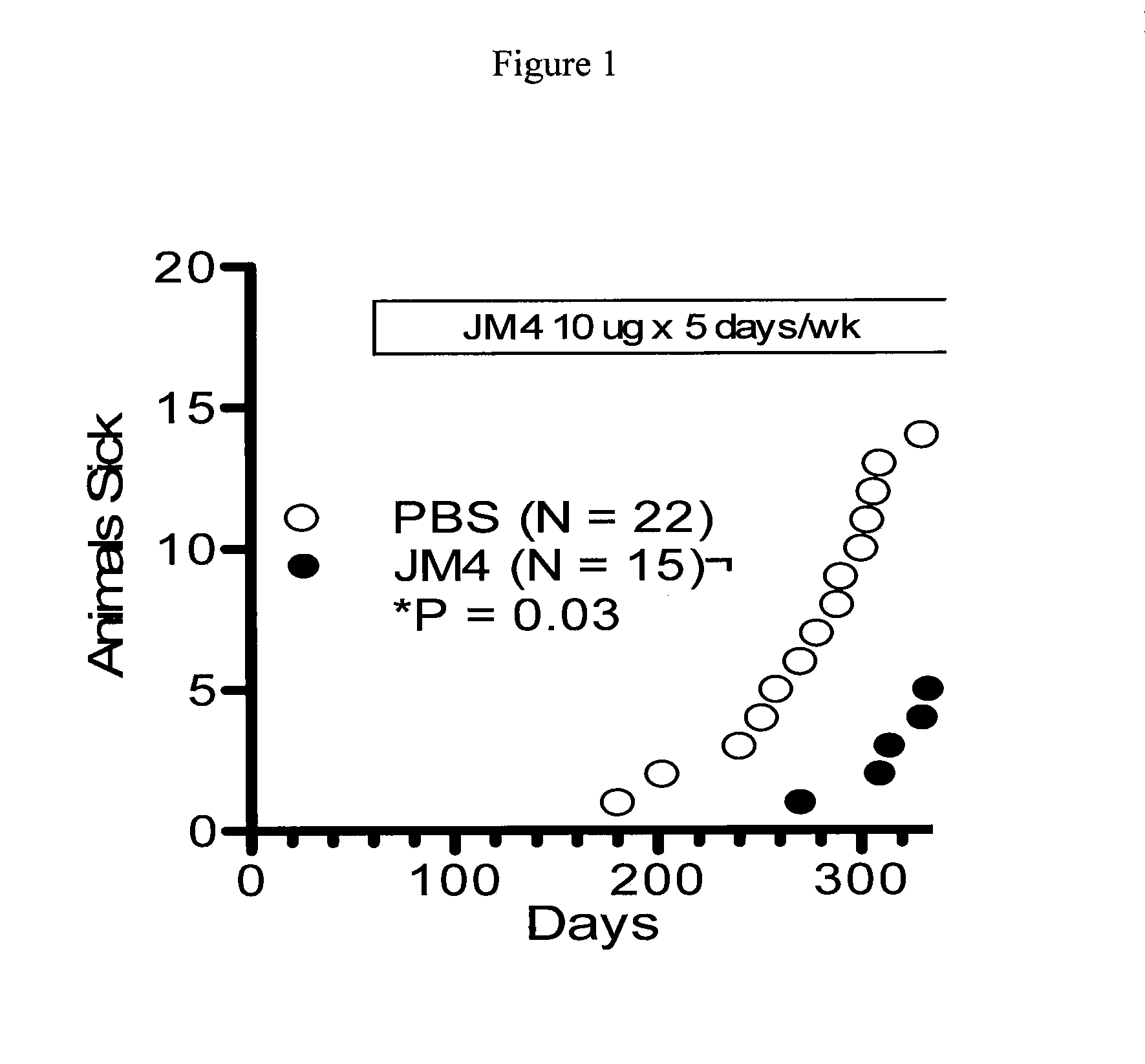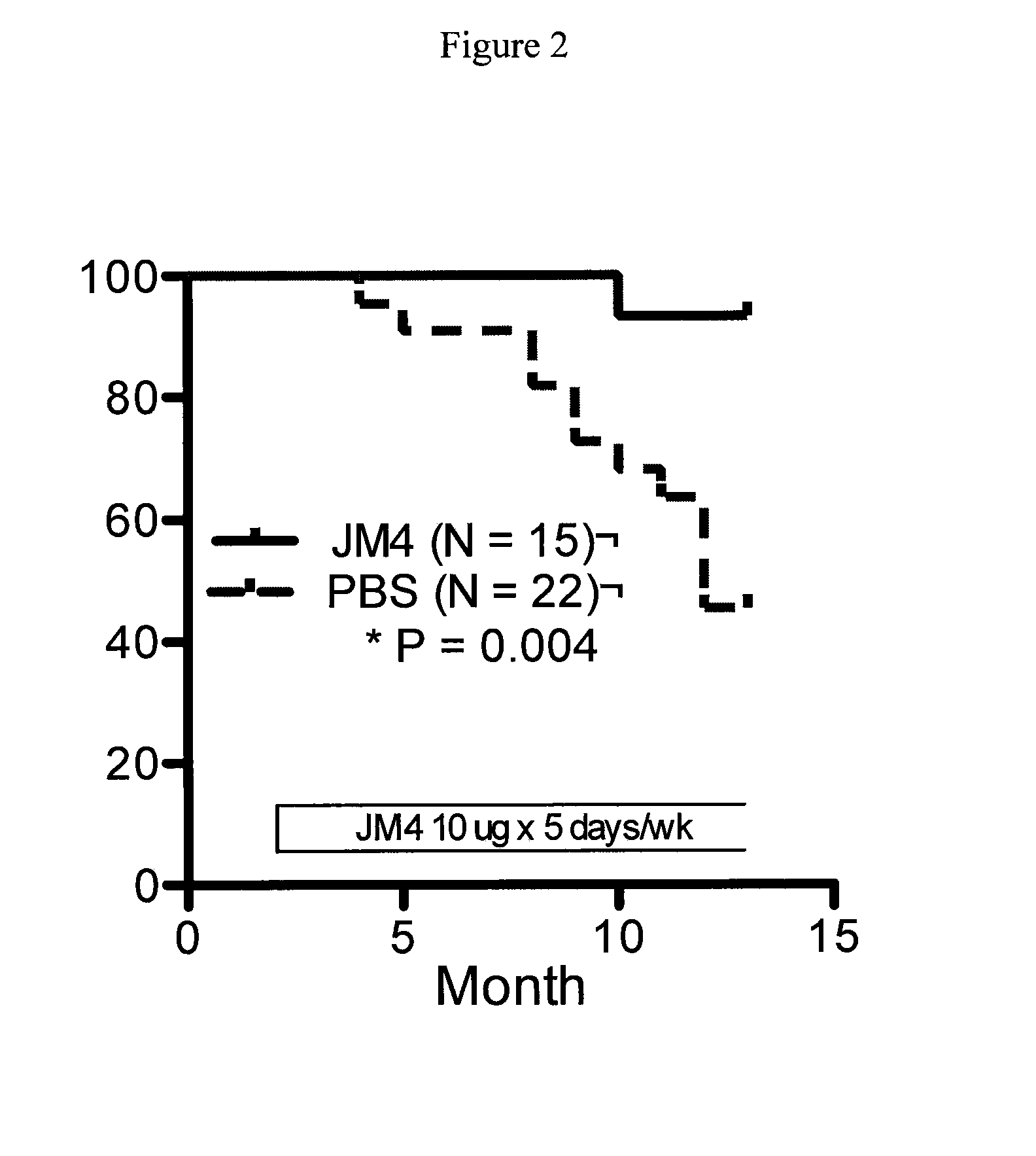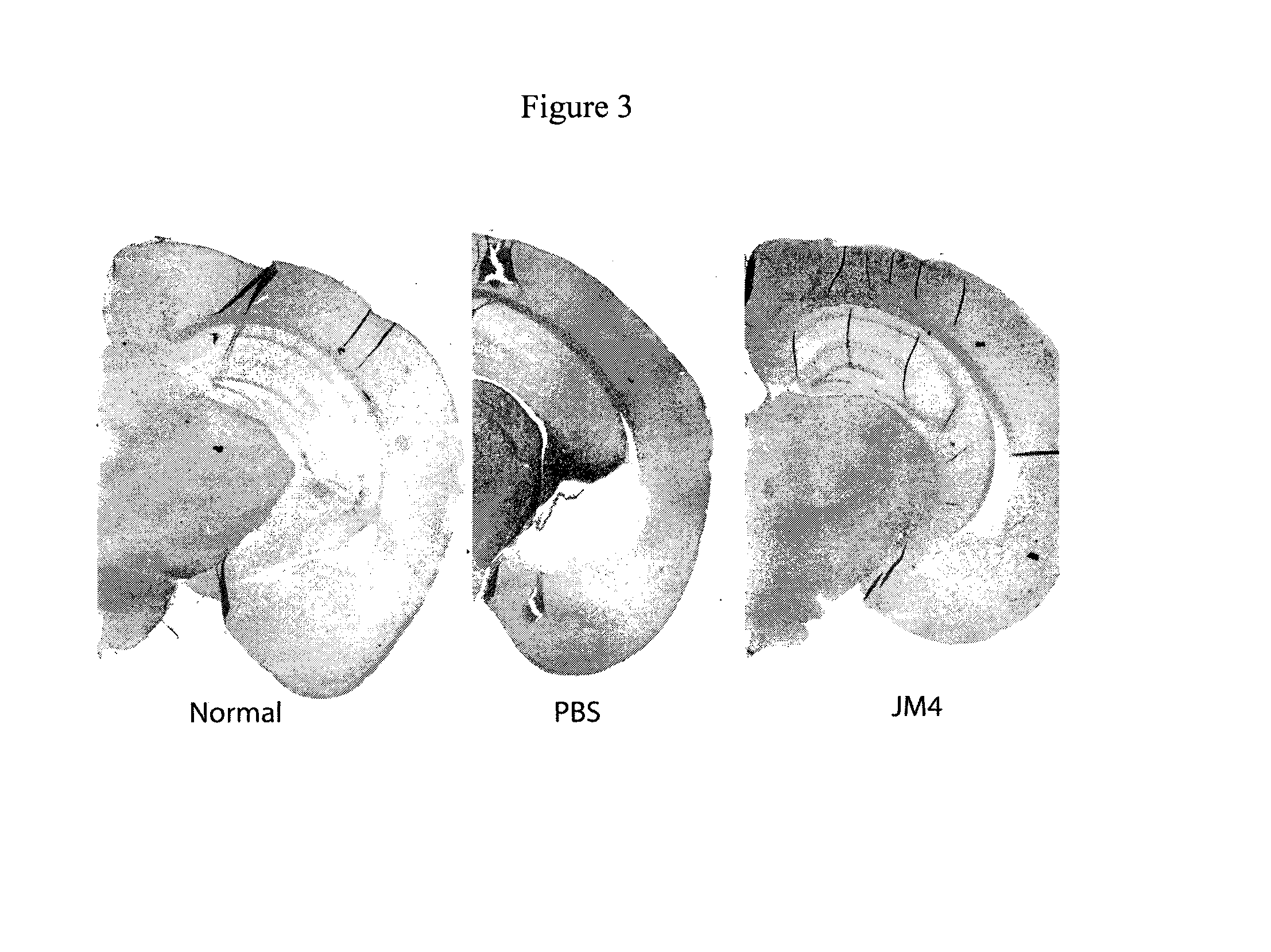Use of EPO-derived peptide fragments for the treatment of neurodegenerative disorders
- Summary
- Abstract
- Description
- Claims
- Application Information
AI Technical Summary
Benefits of technology
Problems solved by technology
Method used
Image
Examples
example 1
Synthesis of Short, Stabilized EPO-Derived Peptide Library
[0111]EPO-derived peptides (ten (10)-twenty-five (25) amino acids) (SEQ ID NOs: X-Y) were synthesized and purified by commercial sources. Peptides were synthesized using Fmoc solid phase techniques on an automated peptide synthesizer using synthtic amino acids. Synthesized EPO-derived small peptides were purified by high performance liquid chromatography (HPLC) to more than 90% purity. Sample purity was established using MALDI-TOF mass spectrometry.
example 2
Therapeutic Effect of Synthesized, Short, Stabilized EPO-Derived Peptides in a Mouse Model of Chronic Neurodegenerative Disease
[0112]In this study, tau mice (Jackson Laboratory) were used to test the therapeutic effect of the small EPO peptides on modifying the clinical and histopathologic outcome of a representative chronic neurodegenerative disease.
[0113]JM4 therapy was initiated in the tau mice (N=15) by administering 10 μg of JM4 subcutaneously for five (5) days per week after weaning early in the asymptomatic period at two (2) months of age. A control sham-treated group (N=22) was given phosphate-buffered saline (PBS). To determine the time of disease onset, animals were evaluated weekly by two observers (one of which was blinded). Disease onset was defined as mice exhibiting hindlimb grasping for more than 10 seconds or hindlimbs maintained in a retracted position for 30 seconds or longer when the animal was lifted by the tail. Animals were monitored until close to end of life...
example 3
Neuropathology of JM4-Treated Tau Mice Compared to PBS-Treated Tau Mice: Ventricular Size
[0116]In this study, ventricular size of a normal mouse brain, a tau mouse brain treated with PBS and a tau mouse brain treated with JM4 was compared. Ventricles are known to grow larger as a result of Alzheimer's disease (de Leon et al., AJR 1989, vol. 152, no. 6, 1257-1262). The increase in ventricular size creates larger gaps in the brain and decreases overall brain mass resulting in mild cognitive impairment which is associated with the early stages of Alzheimer's disease.
[0117]Briefly, tau mice were subcutaneously administered 10 μg of JM4 or administered PBS five (5) days per week starting at two (2) months of age. Likewise, wild-type mice were subcutaneously administered PBS five (5) days per week starting at two (2) months of age. Mice were sacrificed, perfused with saline and the brains and spinal cords were placed in 4% parformaldehyde and embedded in paraffin. Paraffin-embedded brain ...
PUM
| Property | Measurement | Unit |
|---|---|---|
| Pharmaceutically acceptable | aaaaa | aaaaa |
Abstract
Description
Claims
Application Information
 Login to View More
Login to View More - R&D
- Intellectual Property
- Life Sciences
- Materials
- Tech Scout
- Unparalleled Data Quality
- Higher Quality Content
- 60% Fewer Hallucinations
Browse by: Latest US Patents, China's latest patents, Technical Efficacy Thesaurus, Application Domain, Technology Topic, Popular Technical Reports.
© 2025 PatSnap. All rights reserved.Legal|Privacy policy|Modern Slavery Act Transparency Statement|Sitemap|About US| Contact US: help@patsnap.com



